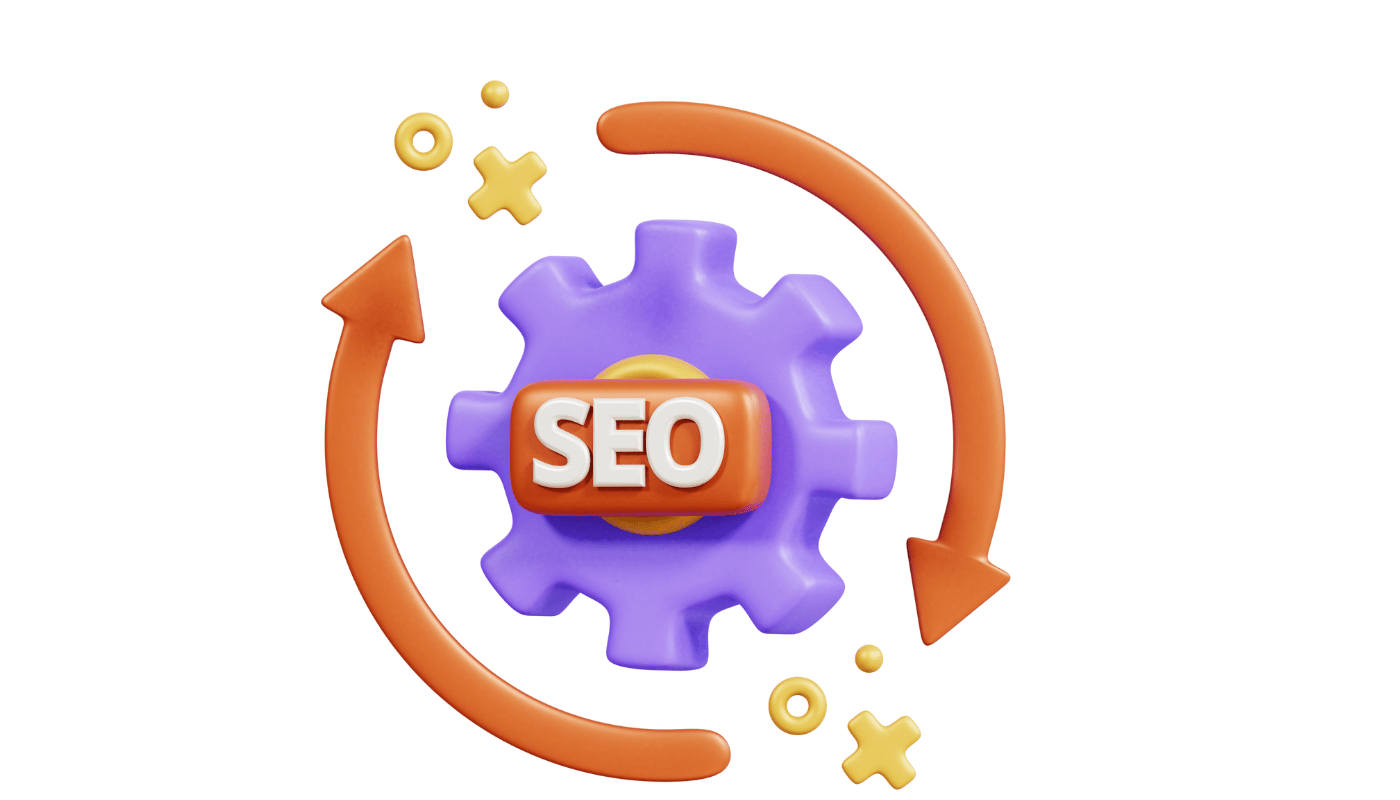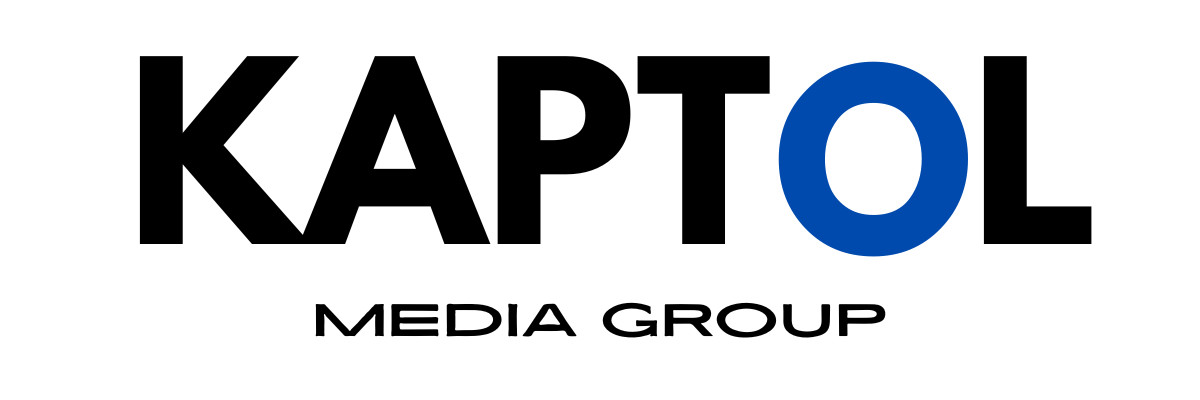The Importance of Keyword Research for SEO
Keyword Research and its importance for SEO

Keyword research is a foundational component of SEO and digital marketing.
It involves identifying and analysing the words and phrases that people enter into search engines when looking for information, products, or services. This process is essential because it helps marketers understand the language their target audience uses and the type of content they should create to attract and engage this audience effectively.
Steps in Keyword Research:
1.Identify Your Topics
The first step in keyword research, identifying your topics, is crucial as it sets the foundation for all the detailed keyword analysis that follows.
This step involves determining broad areas of interest that are pertinent to your business and that resonate with your target audience.
By starting with broad topics, you can systematically narrow down to more specific keywords, which will guide your content strategy and SEO efforts.
Here’s how to effectively identify and utilize these topics:
Understanding Your Business and Audience
Business Objectives and Services:
Begin by reviewing your business objectives, products, and services. Understanding what you offer is crucial for identifying topics that accurately represent your business. For instance, a bakery would focus on topics like pastries, bread-making, custom cakes, etc.
Customer Pain Points:
Consider what problems your products or services solve. Engaging with sales and customer service teams can provide insights into common issues customers face or the questions they frequently ask.
Market Analysis:
Analyzing market trends and industry demands can also help in identifying relevant topics. This includes looking at industry reports, competitor websites, and trade journals to see what subjects are currently trending in your sector.
Techniques to Identify Topics
Brainstorming Sessions:
Organise brainstorming sessions with team members from different departments like marketing, sales, and customer support. Each department can provide unique insights into potential topics based on their interaction with customers and their understanding of the market.
Use of Tools:
Utilise tools like Google Trends to analyse the popularity of potential topics over time and across different regions. This can help in pinpointing topics that are gaining traction or are consistently relevant to your audience.
Customer Feedback and Forums:
Review customer feedback, social media mentions, and relevant online forums to identify common themes or questions that arise among your audience. This direct input can be invaluable in shaping your topic list.
SEO and Competitive Analysis Tools:
Tools like SEMrush, Ahrefs, or Moz can be used to see what topics your competitors are focusing on and what is performing well in your industry. These tools can provide insights into keywords that drive traffic to competing sites, helping you to identify potential topics.
Structuring Your Topics
Creating Topic Buckets:
Once you have a list of potential topics, organize them into categories or 'buckets'. These buckets help in structuring your keyword research and later, your content. For example, a technology company might have buckets for hardware, software, tech support, and innovation.
Prioritisation:
Prioritise topics based on business goals, customer interest, and search volume potential. This helps in focusing your efforts on areas that are most likely to yield returns in terms of traffic and engagement.
Alignment with Content Strategy:
Ensure that the topics align with your overall content strategy.
This alignment ensures that the effort put into keyword research translates effectively into your marketing and content creation efforts, maintaining a cohesive narrative across all platforms.
By carefully selecting and prioritising relevant topics at the beginning of your keyword research, you can ensure that the subsequent steps are more focused and effective, leading to a more successful SEO and content marketing strategy. This structured approach helps in attracting the right audience and achieving better engagement and conversion rates.

2.Content Creation and Optimisation
After identifying relevant topics and pinpointing the best keywords, the next step in keyword research is content creation and optimisation.
This is where you apply the insights gained from your keyword research to develop content that not only ranks well in search engines but also engages and converts your audience.
Here’s a detailed look at how to effectively create and optimise content as part of your SEO strategy:
Content Creation
Understand User Intent:
Before creating content, understand the intent behind the keywords you are targeting.
Are users looking for information, trying to make a purchase, or seeking a particular website? This understanding will shape the type of content you create—whether it's informational (blogs, articles, guides), transactional (product pages, sales content), or navigational (home page, about us).
Developing Valuable Content:
Focus on creating content that provides real value to your audience.
This means addressing their pain points, answering their questions, and offering solutions that are clear and actionable. For instance, if your keyword research uncovers a demand for "how to set up a home office," a detailed guide with product recommendations and setup tips would be highly valuable to your readers.
Content Depth and Quality:
Search engines favour content that covers topics comprehensively. Use your keywords to build out content that is thorough and authoritative. This doesn't necessarily mean longer content but rather content that is rich in information, well-researched, and covers various aspects of the topic.
Content Optimisation
Keyword Placement:
Incorporate keywords naturally into your content, especially in high-impact areas like the title, headers, opening paragraph, and conclusion. Be careful not to overuse keywords, as this can lead to 'keyword stuffing'—a practice that search engines penalise.
Meta Tags and Descriptions:
Optimise your meta titles and descriptions with keywords.
These elements are crucial because they influence how your content appears in search results and can affect click-through rates. Make sure they are compelling and provide a clear description of the content.
Use of Alt Tags and Images:
Include images and other multimedia elements to make your content more engaging.
Use alt tags to describe images, incorporating keywords where appropriate. This not only aids in SEO but also improves accessibility.
URL Structure:
Optimise your URLs to be concise and include relevant keywords.
A well-structured URL can provide both users and search engines with more information about the content of the page.
Content Maintenance
Regular Updates:
Keep your content fresh and up-to-date.
Regularly revisiting and updating your content not only keeps it relevant but can also give it a boost in search rankings. This is especially important for topics that are prone to changes and developments.
Content Auditing:
Periodically review your content to see what’s performing well and what isn’t. Use tools like Google Analytics to track engagement and bounce rates. This data can help you refine your content strategy and make informed decisions about updates and future content.
Responding to User Engagement:
Pay attention to how users interact with your content. Comments, social media shares, and questions can provide insights into additional content needs or adjustments to existing content.
By following these steps in content creation and optimisation, you ensure that your SEO efforts are effective and that your content not only attracts traffic but also engages and satisfies your audience.
This approach not only helps in achieving higher search engine rankings but also builds a loyal audience base that values the content you provide.
3.On Page Optimisation
On-page optimisation is a fundamental aspect of SEO that focuses on enhancing the elements within your website to improve its visibility and ranking in search engine results pages (SERPs).
It involves adjustments and improvements to both the content and the HTML source code of a page. Effective on-page optimisation ensures that your website is both accessible and valuable to both users and search engines.
Here's a breakdown of key on-page optimization elements and how to effectively use them:
Title Tags
- Definition: Title tags are HTML elements that specify the title of a web page. They are displayed on SERPs as the clickable headline for a given result and are crucial for usability, SEO, and social sharing.
- Optimisation Tips: Keep title tags concise (50-60 characters to ensure they display properly on SERPs), include main keywords towards the beginning, and ensure that each page has a unique title that accurately reflects the content.
Meta Descriptions
- Definition: Meta descriptions provide a brief summary of the content of a web page. Although they don't directly influence rankings, they are important for click-through rates from search results.
- Optimisation Tips: Write compelling meta descriptions (160-170 characters) that include relevant keywords and encourage users to click. Each meta description should be unique and act as a call to action, summarizing the page's content attractively.
Header Tags
- Definition: Header tags (H1, H2, H3, etc.) are HTML elements used to designate headings and subheadings within your content from other types of text (e.g., paragraph text).
- Optimisation Tips: Use header tags to structure content and make it easier to read. The H1 tag should be used for the main title and include primary keywords. Subsequent headers (H2, H3) should organize content into scannable sections, incorporating secondary keywords where appropriate.
Internal Links
- Definition: Internal links are links that go from one page on a domain to a different page on the same domain. They are used to help navigate the website and establish an information hierarchy for the given website.
- Optimisation Tips: Use descriptive, keyword-rich anchor text for internal links. This not only helps with SEO but also improves the user experience by providing clear links to related content. Ensure the links are relevant and useful to enhance the site's structure and engagement.
Content Quality and Keyword Optimisation
- Definition: High-quality content tailored to the audience's needs can significantly impact SEO success. Keywords should be integrated naturally within the content.
- Optimisation Tips: Focus on creating informative, valuable content that addresses the needs and questions of your audience. Incorporate keywords strategically and naturally throughout the content, including in the first 100 words of the page.
URL Structure
- Definition: The structure of your URLs can affect both user experience and search engine optimisation performance.
- Optimisation Tips: Keep URLs short, descriptive, and relevant to the page content. Include keywords and use hyphens to separate words. Avoid using unnecessary parameters or numbers in URLs.
Mobile Optimisation
- Definition: Ensuring your website is mobile-friendly is crucial as mobile searches continue to rise.
- Optimisation Tips: Implement responsive design so your site automatically adjusts to fit the screen size of the device. Optimise site speed to ensure quick loading times on mobile devices.
Page Load Speed
- Definition: Page load speed is a significant factor in both search rankings and user experience.
- Optimisation Tips: Optimise images, leverage browser caching, and minimize the use of blocking JavaScript and CSS in above-the-fold content.
By systematically addressing these on-page factors, you can significantly improve your website’s potential to rank well in search engines. On-page SEO not only helps search engines interpret page content but also provides a better user experience, which is increasingly important in achieving high rankings and attracting more site traffic.

4.Off Page Optimisation
Off-page optimisation is a crucial component of SEO that focuses on enhancing the perception of a website's popularity, relevance, trustworthiness, and authority.
This is achieved through various means outside the boundaries of the actual website, aiming to have a positive impact on a site's position in search engine results pages (SERPs).
While backlinks are a central element of off-page SEO, there are other strategies that also play important roles in improving a website's search engine visibility.
Building Quality Backlinks
- Definition: Backlinks, or inbound links, are links from one website to a page on another website. Google and other major search engines consider backlinks as votes for a specific page. Pages with a high number of backlinks tend to have high organic search engine rankings.
- Strategies:
- Guest Blogging: Writing articles for other relevant blogs can provide backlinks to your site.
- Broken Link Building: Finding broken links on other sites and suggesting they replace the broken link with a link to relevant content on your site.
- Skyscraper Technique: Creating superior content to what currently has many backlinks, then reaching out to those linking to the inferior content to link to yours instead.
Social Media Marketing
- Role in SEO: Social signals (likes, shares, and comments) may not directly influence rankings, but they can increase online visibility and traffic to your content which can lead to more natural backlinks.
- Strategies:
- Active Engagement: Regularly posting content and engaging with users can increase your brand's visibility and lead to more traffic.
- Influencer Partnerships: Collaborating with influencers can amplify your content's reach and generate more traffic and potential backlinks.
Content Marketing
- Definition: Creating and distributing valuable, relevant, and consistent content to attract and retain a clearly defined audience.
- Strategies:
- E-books, Whitepapers, and Comprehensive Guides: High-quality content that others find valuable enough to link to.
- Infographics and Visual Content: Shareable content that can easily be linked back to or shared on social media.
Brand Mentions
- Definition: The mention of your brand on other websites, which can be linked or unlinked. Google considers linked mentions as backlinks and unlinked mentions as implied links.
- Strategies:
- Press Releases: Useful for getting the word out and potentially being picked up by news websites.
- Participating in Industry Interviews: These can lead to both linked and unlinked mentions.
Local SEO
- Definition: Optimising your online presence to attract more business from relevant local searches.
- Strategies:
- Google My Business: A critical tool for local SEO. Ensuring your listing is complete, accurate, and optimized.
- Local Citations: Listing your business on local directories and websites.
Reviews and Testimonials
- Role in SEO: Reviews can influence your business’s reputation online. Positive reviews can enhance trustworthiness, which indirectly benefits SEO.
- Strategies:
- Encouraging Satisfied Customers: To leave positive reviews on platforms like Google My Business, Yelp, and industry-specific review sites.
Forums and Community Engagement
- Role in SEO: Participating in forums and community discussions can help establish your expertise in the industry.
- Strategies:
- Industry Forums: Regular contributions can lead to more recognition, traffic, and backlinks.
Integration and Consistency
Integrating these off-page SEO strategies and maintaining consistency in your efforts can significantly boost your site’s authority and rankings.
By focusing not only on acquiring backlinks but also on building a comprehensive online presence through social media, content marketing, and community engagement, you can enhance both your SEO and your brand’s overall online visibility.
5.Technical SEO
Technical SEO refers to optimising the infrastructure of a website so that search engines can crawl and index its content more effectively.
The goal is to enhance the technical aspects of a website to boost its rankings in search engine results pages (SERPs). This branch of SEO is foundational, as it addresses the non-content elements of the site, ensuring they meet the technical requirements set by search engines.
Below are key areas of focus within technical SEO and strategies to optimize them:
Page Load Speed
- Importance: Fast loading times improve user experience and can significantly impact your rankings. Google has confirmed that page speed is a ranking factor, especially on mobile.
- Optimisation Strategies:
- Optimise Images: Ensure that images are not larger than necessary, are in the right file format (JPEG for photos, PNG for graphics with fewer than 16 colours), and are compressed for the web.
- Minimise Code: Minify CSS, JavaScript, and HTML by removing unnecessary spaces, commas, and other characters.
- Leverage Browser Caching: Set up caching rules to help browsers store important resources on a user's device, reducing loading times on subsequent visits.
- Use a Content Delivery Network (CDN): CDNs distribute the load, saving bandwidth and speeding up access for users across the globe.
Mobile-Friendliness
- Importance: With the majority of global web traffic coming from mobile devices, having a mobile-friendly website is essential. Google’s move to mobile-first indexing means it predominantly uses the mobile version of the content for indexing and ranking.
- Optimisation Strategies:
- Responsive Design: Ensure your site is responsive, meaning it automatically adjusts to fit the screen size of the device.
- Touch Elements: Make sure touch elements are not too close to each other, enabling easier interaction.
- Mobile-First Content: Prioritise content and navigation structured for mobile users.
Secure Connection (HTTPS)
- Importance: HTTPS encrypts the connection between your website and its visitors, which protects the integrity and confidentiality of data. Google has confirmed HTTPS as a ranking signal.
- Optimisation Strategies:
- SSL Certificate: Install an SSL certificate to shift your website from HTTP to HTTPS.
- Redirects: Implement proper redirects from HTTP to HTTPS to ensure that users and search engines are directed to the secure version of your site.
XML Sitemaps
- Importance: An XML sitemap lists a website’s important pages, making sure Google can find and crawl them all. It also helps search engines understand your website structure.
- Optimization Strategies:
- Sitemap Creation: Create and update XML sitemaps and submit them to search engine webmaster tools.
- Structure: Ensure it’s clean and concise, only listing URLs you want to be indexed.
Robots.txt File
- Importance: This is a file at the root of your site that tells search engines which parts of your site they should and shouldn’t crawl.
- Optimisation Strategies:
- Proper Configuration: Use the robots.txt file to manage crawler traffic to your website and prevent overloading your site with requests.
- Secure Pages: Ensure it’s not accidentally blocking important pages from being crawled.
URL Structure
- Importance: A well-structured URL provides both users and search engines an easy-to-understand indication of what the destination page will be about.
- Optimisation Strategies:
- Descriptive URLs: Include keywords and make sure the structure is organised in a logical manner.
- Avoid Deep Nesting: Keep URLs as simple and concise as possible, avoiding deep nesting of pages within subfolders.
Structured Data
- Importance: Structured data helps search engines understand the content of your site and can enhance your listings in SERPs with rich snippets.
- Optimisation Strategies:
- Schema Markup: Implement and test structured data using schema.org vocabulary to help search engines interpret and display your content effectively.
By focusing on these technical SEO elements, you can improve the technical foundation of your website, enhancing both user experience and search engine visibility. This proactive approach not only aids in achieving higher rankings but also helps in maintaining a competitive edge in the ever-evolving landscape of SEO.
6.LOCAL SEO
Local SEO is a critical strategy for businesses that operate in specific geographic areas.
Whether you have a physical storefront or provide services in a designated region, local SEO helps ensure that your business is visible to those who are most likely to visit or engage with your services—local customers.
Effective local SEO strategies involve several key steps that optimize your online presence to attract more local traffic from search engines.
Here’s how to approach each aspect:
Google My Business (GMB) Optimization
- Importance: Google My Business is a crucial tool for local SEO as it directly influences local search results on Google Maps and in the local pack listings on Google Search.
- Optimisation Strategies:
- Complete and Accurate Information: Ensure all your business information is fully filled out and accurate, including your business name, address, phone number, and hours of operation.
- Verification: Complete the verification process for your business on Google as it adds legitimacy to your listing.
- Regular Updates: Keep your GMB profile updated with the latest information, special hours, and posts about events or promotions.
- Photos and Videos: Upload high-quality photos and videos of your business, as listings with images tend to receive more engagement.
2. Consistent NAP Information Across the Web
- Importance: Consistency in your business’s Name, Address, and Phone number (NAP) across all online platforms boosts your credibility with search engines, reinforcing your geographic location.
- Optimisation Strategies:
- Consistency: Ensure your NAP is uniform across your website, social media profiles, GMB, and online directories.
- Local Directories: Submit your business to reputable local directories and business associations; tools like Moz Local or Yext can help manage these listings efficiently.
Local Backlinks
- Importance: Backlinks from well-respected local sources (like news outlets, community websites, and local business organizations) enhance your website’s local authority.
- Optimisation Strategies:
- Partnerships: Engage in partnerships with other local businesses for link exchange.
- Sponsorships and Community Involvement: Sponsor local events or charities which can lead to mentions and links from their websites.
- Guest Posts: Contribute guest posts to local blogs and news sites with a focus on adding value to the local community.
Localised Content Creation
- Importance: Creating content that reflects local events, news, or activities attracts local search traffic and resonates with a regional audience.
- Optimisation Strategies:
- Blog Posts: Write about local news, events, or activities relevant to your business.
- Location-Specific Pages: If you serve multiple locations, create a dedicated page for each location with specific information about services, directions, and local references.
Online Reviews
- Importance: Positive reviews, especially on platforms like Google My Business and Yelp, can significantly impact local search rankings and consumer trust.
- Optimisation Strategies:
- Encourage Reviews: Ask satisfied customers to leave a review on your GMB or other relevant platforms.
- Respond to Reviews: Actively respond to reviews, both positive and negative, to show that you value customer feedback and engage with your clientele.
Local Keywords
- Importance: Integrating location-based keywords into your website and content helps in ranking for those specific local searches.
- Optimisation Strategies:
- Keyword Research: Use tools like Google Keyword Planner to find local keywords relevant to your business (e.g., “coffee shop in Atlanta”).
- Incorporate Local Keywords: Include these keywords naturally in your website’s meta tags, descriptions, content, and URLs where appropriate.
Mobile Optimisation
- Importance: A significant amount of local searches are performed on mobile devices; thus, having a mobile-friendly website is imperative.
- Optimisation Strategies:
- Responsive Design: Ensure your website is responsive and offers a seamless experience on mobile devices.
- Speed Optimisation: Improve mobile loading times since speed is a key factor for mobile SEO.
By focusing on these areas, local businesses can enhance their visibility in search results that are geographically relevant, attracting more foot traffic and local customers. This targeted approach to SEO is essential for businesses looking to dominate their local market and connect more effectively with their community.









